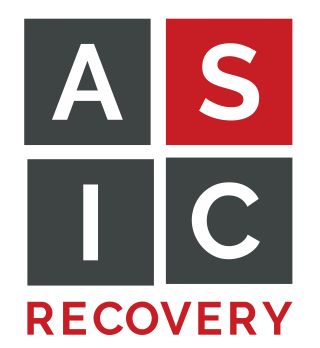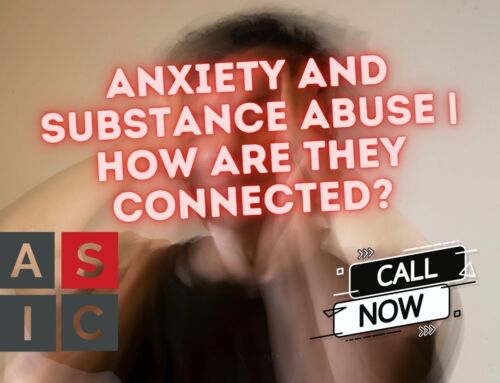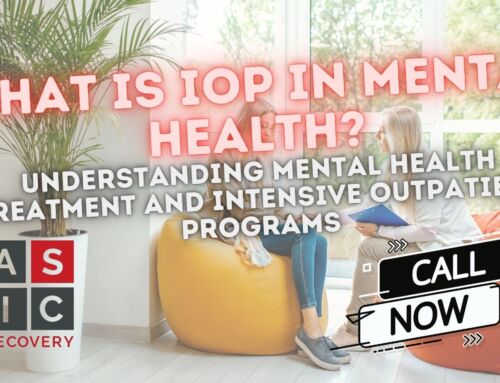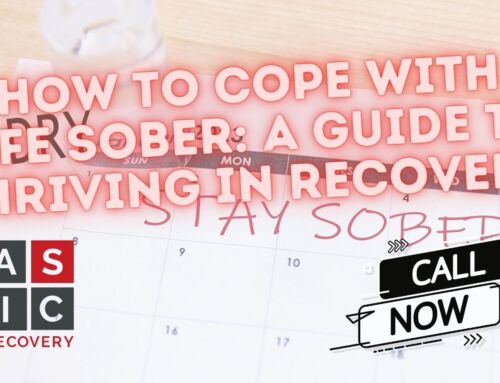Negative thought patterns, also known as cognitive distortions, are irrational or exaggerated ways of thinking that can cause emotional distress and negatively impact your mental health. In many cases, the best way to break free from them is through cognitive behavioral therapy (CBT).
These thought patterns can be triggered by all kinds of situations, each unique to the person experiencing them, and can lead to feelings of anxiety, low self-esteem, and depression among others.
For many people, they lead to self-sabotage and other self-destructive behaviors that keep them from achieving their goals. At the very least, they can make you completely miserable when there’s no objective reason to feel this way.
You may not even be aware of how these negative thoughts are affecting your life, but they can be insidious and difficult to stop.
It’s essential to recognize and understand these patterns if you want to break them. Some common negative thought patterns include:
- All-or-nothing thinking (viewing situations in black and white)
- Overgeneralization (applying one negative experience to a whole range of situations)
- Catastrophizing (assuming the worst possible outcome)
- Filtering out positive experiences (focusing only on the negative and ignoring the positive)
- Personalizing negative events (believing you are entirely at fault for a situation even when that’s partially or completely untrue)
- Jumping to conclusions (thinking the worst immediately without justification or evidence)
Becoming aware of these thought patterns and how they manifest in your life is the first step towards breaking free from them. Awareness, which you can learn through CBT, allows you to recognize when you’re engaging in negative thinking and take action to change your mindset.
The Impact of Negative Thinking on Your Life and Well-being
Negative thinking can have a significant impact on your overall well-being and quality of life. It can lead to a constant state of stress and anxiety, which can take a toll on both your mental and physical health.
This constant stress can lead to a variety of health issues, such as sleep disturbances, digestive problems, and even a weakened immune system.
Negative thinking patterns can also cause you to develop a negative self-image, leading to low self-esteem and self-confidence. This can affect your relationships with others as you may become overly critical of yourself and others or be overly sensitive to criticism.
It can also stop your personal and professional growth, or even send you backward, as you may be less likely to take risks or pursue opportunities due to a fear of failure or rejection (or a feeling that there’s no possible way you could succeed no matter what you do).
In addition to impacting your mental and physical health, negative thought patterns can also affect your overall happiness and satisfaction with your life.
When you’re constantly focusing on the negative aspects of your life or expecting the worst, it can be difficult to appreciate the positive experiences and opportunities around you. This can lead to feelings of hopelessness and despair, making it challenging to find joy in things that would normally spark it for you.
How Cognitive Behavioral Therapy Can Help
CBT is a type of psychotherapy that focuses on changing negative thought patterns and behaviors to improve mental health and overall well-being. It’s a widely researched and evidence-based approach that has been proven effective in treating a variety of mental health issues, including anxiety, depression, and obsessive-compulsive disorder.
CBT is based on the idea that our thoughts, feelings, and behaviors are interconnected. According to this theory, negative thoughts can lead to negative emotions, which can then influence our actions and behaviors.
By identifying and changing these negative thought patterns, you can improve your emotional state and ultimately change your behaviors in a positive way.
One of the main goals of CBT is to help you develop more balanced and rational ways of thinking, which can lead to a healthier mindset and improved mental health. This is achieved through various techniques and exercises designed to help you identify, challenge, and replace negative thoughts with more positive and realistic ones.
Identifying and Challenging Negative Thought Patterns with CBT Techniques
The first step in breaking negative thought patterns is to identify them. This means becoming more aware of your thoughts and recognizing when they are irrational or distorted.
A helpful technique for doing this is to keep a thought journal where you can record your thoughts and emotions throughout the day. This will allow you to identify patterns and triggers for your negative thinking.
Once you have identified your negative thought patterns, you can begin to challenge them. You need to examine the evidence for and against your negative thoughts and consider alternative explanations or perspectives.
For example, if you find yourself thinking, “I’ll never be successful,” you can challenge this thought by asking yourself questions like, “What evidence do I have to support this belief?” and “Are there any examples of times when I have been successful?”
Another helpful CBT technique for challenging negative thoughts is to use cognitive restructuring, which involves replacing negative thoughts with more balanced and rational ones.
This can be done by first identifying the cognitive distortion (like all-or-nothing thinking) and then generating a more realistic and balanced thought to replace it.
For example, instead of thinking, “I’m a complete failure because I didn’t get the promotion,” you can reframe the thought to, “Not getting the promotion doesn’t mean I’m a failure. I have other accomplishments and can continue to work towards my goals.”
Practical Steps to Break Negative Thought Loops
A negative thought loop is when the same negative thought pattern keeps repeating over and over despite your attempts to use the above CBT techniques. It’s something you can’t get out of your head for hours, or even days.
Breaking negative thought loops requires interrupting the cycle of negative thinking and refocusing your attention on more positive or neutral thoughts in a concentrated way. Sometimes this means finding a different thought to focus on, and sometimes it means distracting yourself entirely.
Here are some practical steps you can take to break negative thought loops:
- Practice mindfulness: Mindfulness is when you’re fully present in the moment and observing your thoughts and feelings without judgment. This can help you become more aware of your negative thought patterns and give you the opportunity to interrupt and redirect them.
- Engage in positive activities: Participating in activities that bring you joy or a sense of accomplishment can help shift your focus away from negative thoughts and boost your mood. This can include hobbies, exercise, spending time with loved ones, or volunteering.
- Use positive affirmations: Repeating positive affirmations can help to counteract negative thoughts and build a more positive self-image. Choose affirmations that resonate with you and repeat them daily.
- Set realistic goals: Setting achievable goals and working towards them can help to shift your focus away from negative thoughts and towards personal growth and accomplishment.
- Prayer/mantras and/or meditation: For those who are so inclined, deep prayer, mantras, or meditation can be a highly beneficial way of getting out of your current mindset and into one that’s healthier. Both prayer and mantras are particularly effective because they require you to speak (out loud or in your head) over and over, drowning out the negative thoughts.
Incorporating Mindfulness and Meditation in Your Journey
Mindfulness and meditation can often seem difficult to employ, or even impossible, if you feel like your negative thought patterns are too deeply ingrained. However, with practice, they can be powerful tools in breaking negative thought patterns and cultivating a more positive mindset.
By practicing mindfulness, you learn to become more aware of your thoughts and emotions, allowing you to recognize when you are engaging in negative thinking and take action to change your mindset.
A big part of mindfulness is accepting your thoughts without judgment. Training yourself to divorce your thoughts from your emotions can render the negative thought patterns less powerful.
Meditation, particularly mindfulness meditation, can help to train your brain to be more present and focused, making it easier to identify and let go of negative thoughts. Regular meditation practice has been shown to have numerous benefits for mental health, including reduced anxiety and depression, improved focus and attention, and increased feelings of well-being.
To incorporate mindfulness and meditation into your journey, consider starting with a few minutes of meditation each day, gradually increasing the duration as you become more comfortable. There are many mindfulness podcasts and videos online as well that can guide you through the process when you’re new.
You can also practice mindfulness throughout your day by paying attention to your thoughts and emotions and bringing your focus back to the present moment when you notice your mind wandering.
Tips for Maintaining a Positive Mindset
Maintaining a positive mindset requires practice and consistency. Here are some tips to help you stay on track:
- Continue to challenge negative thoughts: It’s important to regularly evaluate your thoughts and challenge any negative patterns that emerge. This won’t happen overnight — it requires lots of practice.
- Surround yourself with positivity: Spend time with positive people, engage in activities that bring you joy, and create a positive environment in your home and workspace. Try your best to stay away from triggers and negative people/places/things.
- Practice gratitude: Cultivate an attitude of gratitude by regularly reflecting on the things you are grateful for in your life. Praying or meditating on the things that you’re grateful for every day is a great way to start.
- Take care of your physical health: Exercise, eat well, and get enough sleep to support your mental well-being.
- Stay open to growth and learning: Embrace new experiences, learn from your mistakes, and be open to personal growth and development. It will take time to change old thought patterns and behaviors. Be gentle with yourself and allow yourself the time for this to happen.
How to Stop Negative Thinking Patterns in Different Situations
It’s important to recognize that different situations may trigger different negative thought patterns. Here are some strategies for dealing with negative thoughts in various situations:
- At work: Focus on your accomplishments and strengths, set realistic goals, and seek support from colleagues or mentors when needed.
- In relationships: Practice open communication, express your feelings and needs clearly, and avoid making assumptions or jumping to conclusions.
- In social situations: Challenge any negative self-talk, focus on enjoying the present moment, and practice positive self-talk and affirmations.
- In stressful situations: Practice mindfulness and deep breathing, focus on problem-solving, and seek support from friends or a therapist.
By adapting your strategies to different situations, you can better manage negative thought patterns and maintain a positive mindset in all areas of your life.
Seeking Professional Help and Support
While there are many techniques and strategies you can use to break negative thought patterns, it’s important to recognize that seeking professional help and support may be necessary in some cases.
If negative thought patterns are significantly impacting your daily life or causing you distress, it may be helpful to speak with a therapist or mental health professional. For people in recovery from addiction, this is especially helpful.
Therapists trained in CBT have many more techniques than you’ll find on this list and can help you tailor them to your specific needs and goals. They can also help you develop those techniques and change them over time. They provide support, guidance, and accountability.
In addition, support from friends and family can be invaluable in maintaining a positive mindset and breaking free from negative thought patterns. Therapists often do family sessions to help everyone understand how they can support you.
IOP at ASIC Recovery
Are you looking for substance abuse treatment in Texas?
At ASIC Recovery, our Intensive Outpatient Program (IOP) is dedicated to helping individuals develop healthier coping skills and build a recovery supportive network in all aspects.
Click to learn more.



